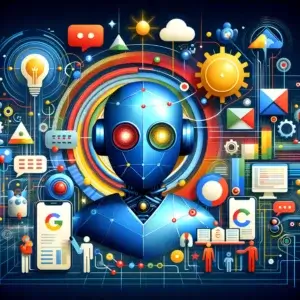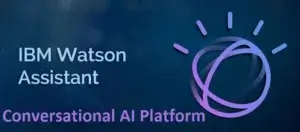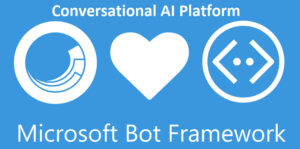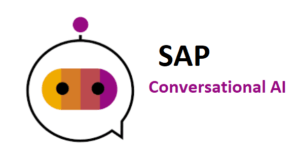Table of Contents
ToggleEnhancing Digital Communication: A Guide to the Top 10 Conversational AI Tool
In the era of digital transformation, conversational AI tools are revolutionizing the way we interact with technology. From enhancing customer service to automating responses, these tools are integral in providing efficient, accessible, and personalized communication experiences. They harness the power of artificial intelligence to understand, interpret, and respond to human language in a way that is both natural and intuitive. In this guide, we explore 10 leading conversational AI tools that are shaping the future of digital communication.
1. ChatGPT by OpenAI
A cutting-edge conversational AI tool developed by OpenAI, ChatGPT is renowned for its ability to generate human-like text responses. It’s widely used for various applications from customer service to content creation, thanks to its deep learning model that can understand and respond to a vast array of queries with remarkable coherence.

ChatGPT 4 Vision:
ChatGPT 4 Vision is a super cool feature that’s like giving eyes to a computer. Imagine having a chat with a robot that can not only read and understand your messages but can also look at pictures you show it and talk about them. That’s what ChatGPT 4 Vision does. You can upload any photo maybe of a dog, a painting, or a graph and ask ChatGPT to tell you what’s in the picture, describe it, or even make smart guesses based on what it sees.
It’s a bit like having a smart friend who can look at a photo and give you all sorts of interesting details or ideas about it. This makes ChatGPT not just a text expert but a bit of an image expert too. Read more about ChatGPT 4 Vision.
2. Google Dialogflow
Dialogflow is a comprehensive development suite for building conversational interfaces. It’s known for its natural language understanding (NLU) module, which enables developers to create sophisticated and highly interactive AI chatbots for websites, mobile apps, and various other platforms.

3. IBM Watson Assistant
This AI assistant from IBM excels in delivering complex enterprise solutions. Watson Assistant is designed to understand context in conversations, providing accurate responses and helping businesses automate interactions without compromising on customer experience.

4. Microsoft Bot Framework
Part of Microsoft Azure, this framework allows developers to build, test, and deploy AI-powered bots. It offers robust features like NLU, data storage, and integration with various Microsoft services, making it a preferred choice for enterprise-level applications.

5. Amazon Lex
Powered by the same technology as Amazon’s Alexa, Lex developers create voice and text conversational interfaces. Its seamless integration with AWS services makes it ideal for building sophisticated, AI-driven chatbot applications.

6. Rasa
Rasa stands out for its open-source framework, enabling developers to build highly customizable chatbots. It offers a unique blend of NLU and machine learning, allowing for more personalized and context-aware conversational experiences.

7. BERT (Bidirectional Encoder Representations from Transformers)
Developed by Google, BERT is a breakthrough in natural language processing. It’s particularly effective in understanding the nuance and context of language in search queries, greatly enhancing the capabilities of conversational AI tools.
8. SAP Conversational AI
SAP’s tool is designed for creating powerful chatbots for enterprise applications. It offers robust capabilities in language processing, bot building, and integration with SAP’s extensive suite of business applications.

9. Wit.ai (by Facebook)
Wit.ai is a versatile framework for building voice-activated interfaces and chatbots. It’s highly popular among developers for its ease of use and the ability to understand and process human language, making it a go-to for integrating conversational features into mobile apps, wearables, and home automation devices.
10. Pypestream
Pypestream specializes in customer engagement through conversational AI. It focuses on streamlining customer service and business processes, providing solutions that include chatbots capable of handling complex queries and transactions with high efficiency and accuracy.
Frequently Asked Questions About Conversational AI Tools
Q1: What is Conversational AI and why is it important?
Conversational AI refers to technologies that enable computers to understand, process, and respond to human language in a natural and intuitive way. It’s important because it enhances customer engagement, improves accessibility, and automates communication processes, making interactions more efficient and personalized.
Q2: Can ChatGPT be used for languages other than English?
Yes, ChatGPT has capabilities in several languages, although its proficiency can vary depending on the language. It’s most effective in English but is continually improving in other languages through advanced training and updates.
Q3: Is Google Dialogflow free to use?
Google Dialogflow offers a free tier, which is sufficient for basic use and small-scale applications. However, for more advanced features or higher usage volumes, there are paid plans available.
Q4: How does IBM Watson Assistant differ from other AI assistants?
IBM Watson Assistant is specifically designed for enterprise solutions, offering advanced understanding of context and industry-specific customization. This makes it particularly suitable for businesses requiring complex, tailored conversational AI solutions.
Q5: Do I need coding skills to use Microsoft Bot Framework?
Some coding knowledge is beneficial when using Microsoft Bot Framework, especially for creating more sophisticated bots. However, Microsoft provides documentation and tools that make the process accessible for those with basic programming skills.
Q6: Can Amazon Lex integrate with other Amazon Web Services?
Yes, Amazon Lex is designed to integrate seamlessly with a wide range of AWS services, enhancing its functionality and allowing for more robust, scalable applications.
Q7: Is Rasa only for building chatbots?
While Rasa is primarily used for building chatbots, its capabilities extend to any application requiring natural language understanding and conversational AI, including voice interfaces and more complex AI solutions.
Q8: What makes BERT by Google unique in conversational AI?
BERT’s unique feature is its ability to understand the context and nuance of language in a way that was not previously possible, making AI conversations and search queries much more accurate and human-like.
Q9: Are SAP Conversational AI and Wit.ai suitable for small businesses?
Yes, both tools can be suitable for small businesses. SAP Conversational AI offers scalable solutions, while Wit.ai is accessible and easy to use, making them both viable options for businesses of all sizes.
Q10: What kind of businesses can benefit from using Pypestream?
Pypestream is particularly beneficial for businesses that require efficient customer service automation, such as e-commerce, banking, insurance, and healthcare, where handling a large volume of queries and transactions is crucial.
Conclusion
The field of conversational AI is rapidly evolving, offering diverse tools for businesses and developers to enhance customer interaction and automate communication. Each of these tools brings unique strengths, from advanced machine learning capabilities to user-friendly interfaces for building custom chatbots. By leveraging these technologies, businesses can revolutionize the way they engage with their audience, offering seamless, efficient, and personalized experiences.
This article provides an overview of some of the most influential conversational AI tools, helping businesses and developers navigate the options available for integrating advanced AI conversational capabilities into their services and products.




